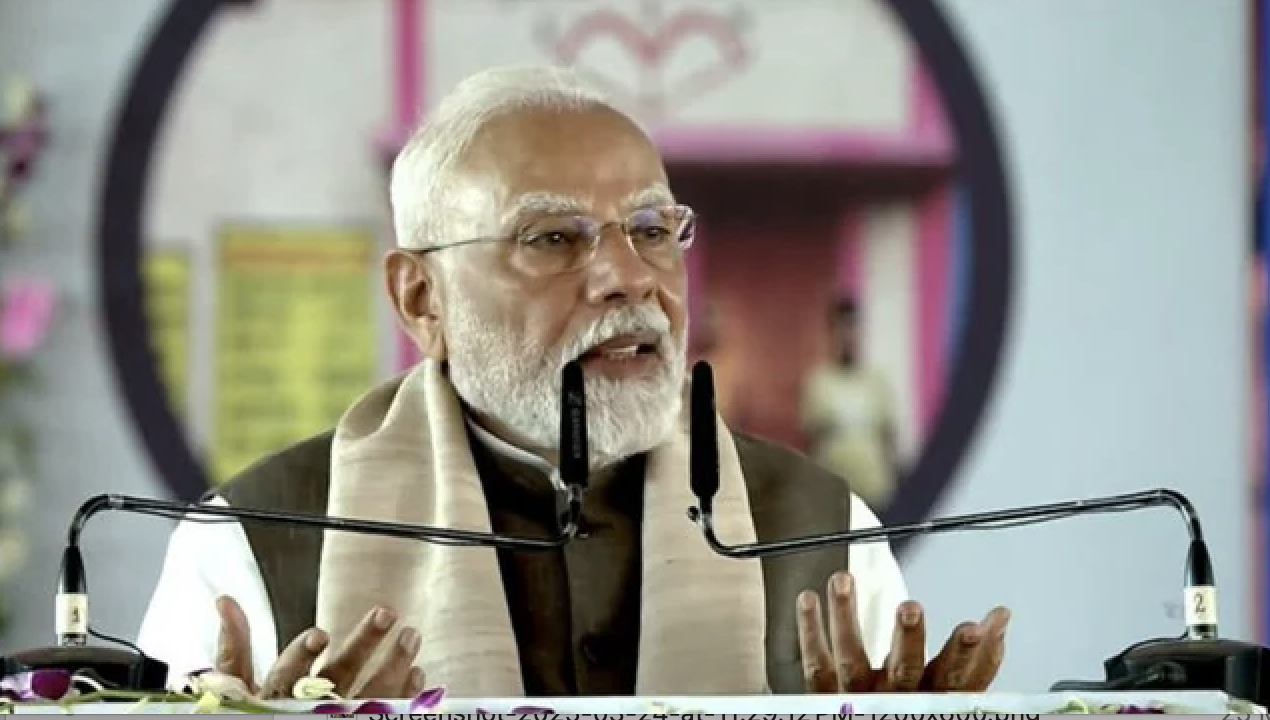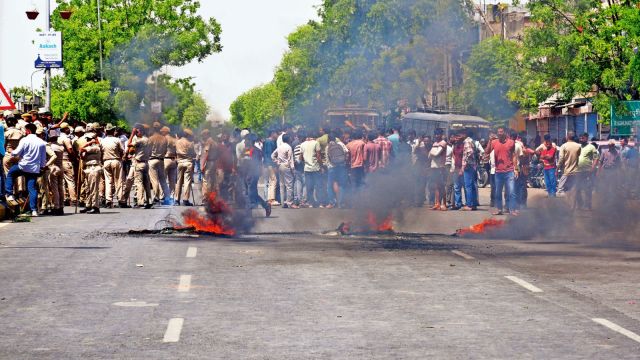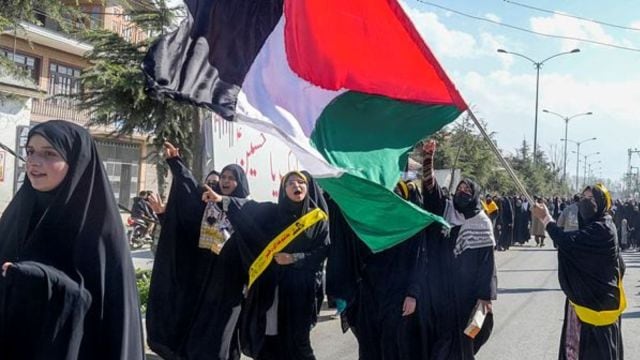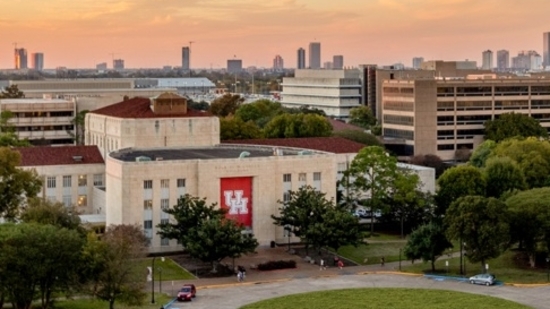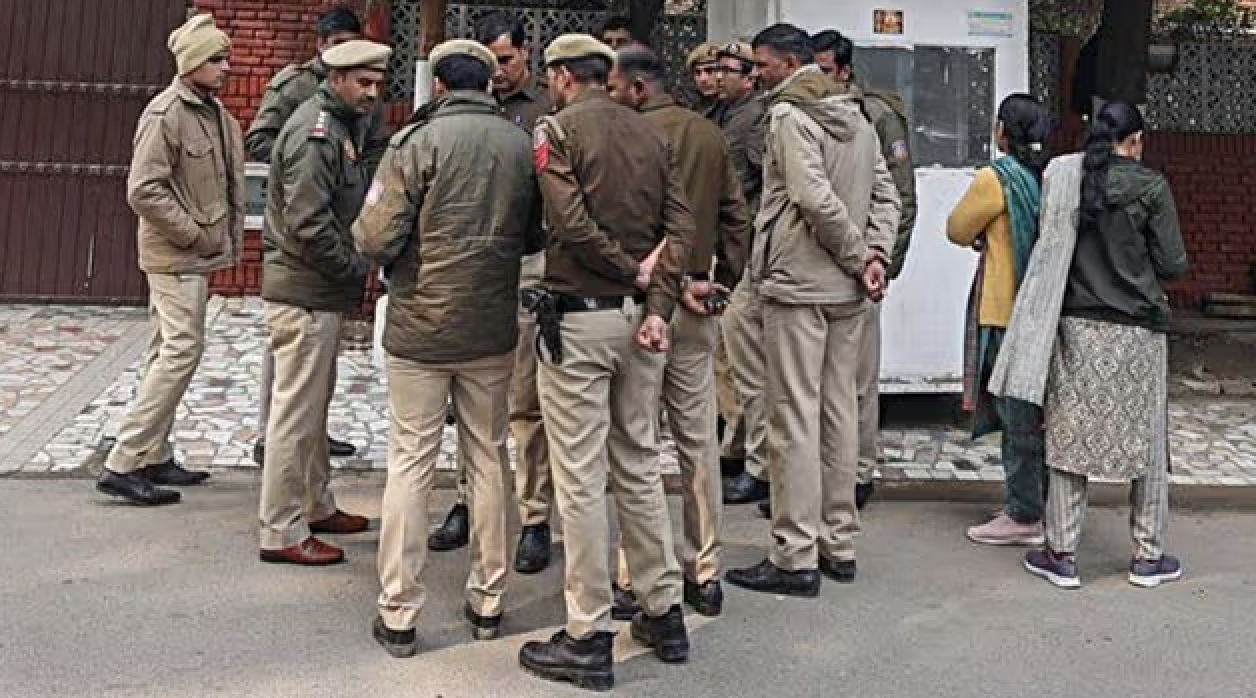
(Photo: Altered by The Quint)
By MEGHNAD BOSE / The Quint
In May 2021, a Hindutva mahapanchayat was held in Mewat’s Indri village. It witnessed several anti-Muslim hate speeches made by Hindutva leaders who had assembled in support of the accused in the case of the mob lynching of gym trainer Asif Khan.
Among the speakers was BJP leader and Karni Sena chief Surajpal Amu. Referring to Muslims, Amu provoked the attendees at the mahapanchayat, “They make pornographic pictures of our sisters and daughters, and we shouldn’t even murder them?”
A year later, in May 2022, there was yet another Hindutva Mahapanchayat in Haryana. Once again, it was held in Mewat – in the village of Sangel. The cause this time was different. It was being held in retaliation against the Haryana Police filing an FIR regarding videos of anti-Muslim violence which had gone viral. The mahapanchayat was held to threaten the police and the administration to revoke the FIR, even though the FIR itself was against unidentified persons. There were hate speeches and calls for violence aplenty here as well.

And these mahapanchayats, attended by hundreds and thousands of vigilantes and members of Haryana’s Hindutva outfits aren’t the only events which are acting as communal flashpoints in Mewat.
In recent months, there has been ample evidence to show that Mewat is witnessing a significant amount of vigilante violence, at the hands of self-professed ‘gau rakshaks’ or cow vigilantes. More on that in a bit. The region has also been a particular target area for online anti-Muslim narratives peddled by Hindutva groups and their foot soldiers.
The Mewat region is loosely defined as stretching from Alwar and Bharatpur in Rajasthan to parts of Haryana and certain parts of western Uttar Pradesh. It is a region broader than the district in Haryana that it lent its name to, till 2016.
Yet, the demographics of the district formerly known as Mewat (renamed Nuh six years ago), do serve to explain the Hindutva focus on it.
The district of Nuh (known as Mewat till 2016) has a majority Muslim population. According to the 2011 Census, around 79.2% of Nuh’s total population of 10.89 lakh people are Muslims, while Hindus comprise 20.4% of the population.
Alishan Jafri, an independent journalist who focuses on tracking hate crimes and vigilante violence, remarks, “Such a large district, with more than 75% of the population being Muslim, is a thorn in the eyes of Hindutva groups and organisations. In the last one year, Mewat has been an object of special focus and attention for Hindutva groups. If you see the two mahapanchayats organised in 2021 (the one in Indri village in May and then the one in Pataudi in July), people specifically spoke about teaching the Muslims of Mewat a lesson.”
From Your Phones to the Floor of the House, Branding Mewat as ‘Mini Pakistan’
In September 2021, BJP MLA and Leader of Opposition in the Rajasthan Assembly, Madan Dilawar stated on the floor of the House that the Mewat region had turned into “mini Pakistan”.
Dilawar’s remark might have prompted an uproar in the Rajasthan Assembly, but his comments are par for the course among the Hindutva discourse in the region.
And it’s not just BJP leaders or members of local Hindutva outfits who routinely use the phrase “mini Pakistan” while referring to Mewat. During the filming of the documentary ‘The Making of Lynchistan: Inside India’s Deadly Gau Raksha Network’ in 2018, even police officials in the region whom The Quint had interacted with had expressed a similar sentiment.
The policemen added, “Only Muslims do this. Not just any Muslims, it is Meo Muslims who do this. When Aurangzeb and Babur were here, they forcibly converted Hindus to Islam. They eat off India, and cheer for Pakistan. These Meo Muslims are such people.”
The “mini Pakistan” discourse is not a very recent phenomenon, but one that has been built up over the years by Hindutva groups on the ground, BJP leaders like Madan Dilawar and even certain media outlets.
Social media posts and forwards such as the ones shown below have helped in making this narrative reach the masses.
The Rise of the Vigilantes, and the Role of the Administration
It is in this backdrop that one must view the recent videos of vigilante violence against Muslims which had gone viral. In the videos, proudly uploaded and shared on social media by the vigilantes themselves, they can be seen harassing and assaulting Muslim men from the region.
Independent journalist Alishan Jafri had helped flag these videos online and tagged the Haryana Police demanding they take action. Jafri says, “There has been an escalation (in recent months). At least four videos (of anti-Muslim violence by vigilantes in the region) went viral recently.”
Following the videos going viral and outrage on social media against the seeming inaction of the concerned authorities, the Haryana Police eventually registered an FIR in the matter, against 3-4 unidentified persons. The police are yet to announce any arrests in the case.
Despite the FIR on the viral videos not naming or identifying any of the vigilantes as the accused, the Hindutva vigilante outfits held a massive mahapanchayat in Mewat’s Sangel village on 8 May, aggressively demanding the revocation of the FIR.
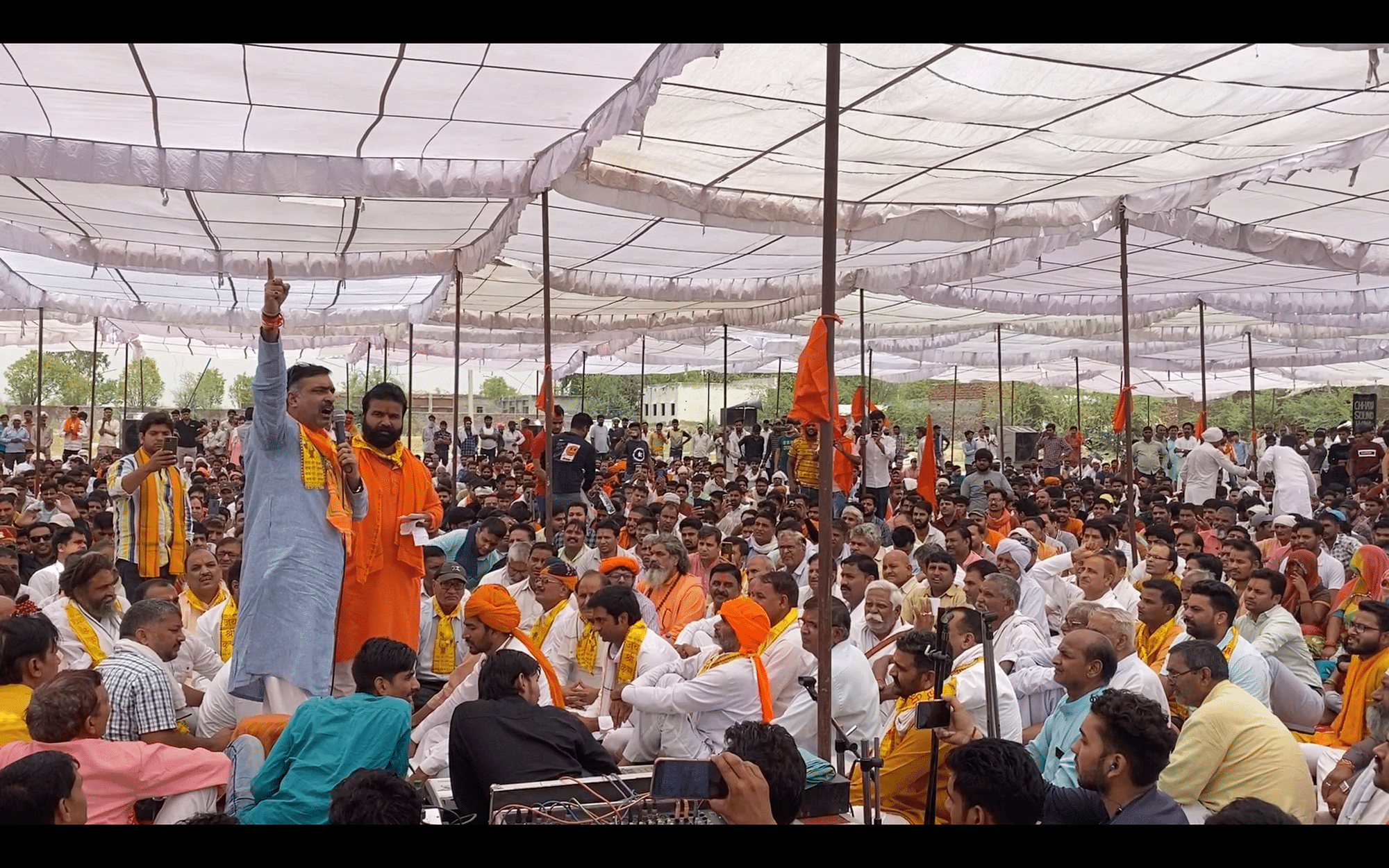
The event was organised by the Vishwa Hindu Parishad, the Bajrang Dal and the Gau Raksha Dal Haryana. The two Hindutva mahapanchayats that had been held in Indri and Pataudi in 2021 involving these same outfits had seen a torrent of hate speech and calls for violence against Muslims. Additionally, the promotional messaging for the event on 8 May had distinct and provocative communal overtones, such as being a show of strength to “those with jihadi mentality”, and this too had been brought to the notice of the district administration.
Yet, despite all of this, the district administration decided to grant them permission to go ahead with the event.
Further hate speeches were made at the Mahapanchayat, including calls for anti-Muslim violence. There were also public threats made to attack Congress MLA Mamman Khan and to burn down his house for speaking up against vigilantes taking the law into their hands.
The communal tensions in Mewat were allowed yet another flashpoint.
Prior to the event, the Deputy Commissioner of Nuh, Ajay Kumar had told The Quint, “The organisers have been contacted and called, and it was clearly communicated to them that the event should, under no conditions, be like that (communally charged). And that even the speeches should not be in hyperbole, in the sense of breaking the law.”
The event was both extremely communally polarising, and the speeches calling for violence and threatening assault did definitely break the law.
No action is known to have been taken against the speakers or organisers of the Mahapanchayat for the same.
An Imminent Danger
The past few years themselves have shown that if allowed to escalate relatively unchecked in this manner, hate speech, mob violence and lawless vigilantism in a politically sensitive region like Mewat can have disastrous consequences.

At mahapanchayats like the ones in Indri in May 2021 and Sangel in May 2022, hundreds and thousands of members of Hindutva vigilante groups are incited and spurred on towards conducting similar acts.
Mewat’s Muslim-majority tag, “mini Pakistan” as the Hindutva leaders call it, gives the vigilantes operating in an around the region that additional sense of being exalted in their circles. Jafri says that the work of such vigilantes provides for a very brave spectacle for the larger Hindutva audience. He explains, “Going into a Muslim-majority area, everybody there is a Muslim, and then they are assaulting people with the kind of impunity these guys enjoy. It makes you a hero if you are going into Mewat and beating Muslims there.”


